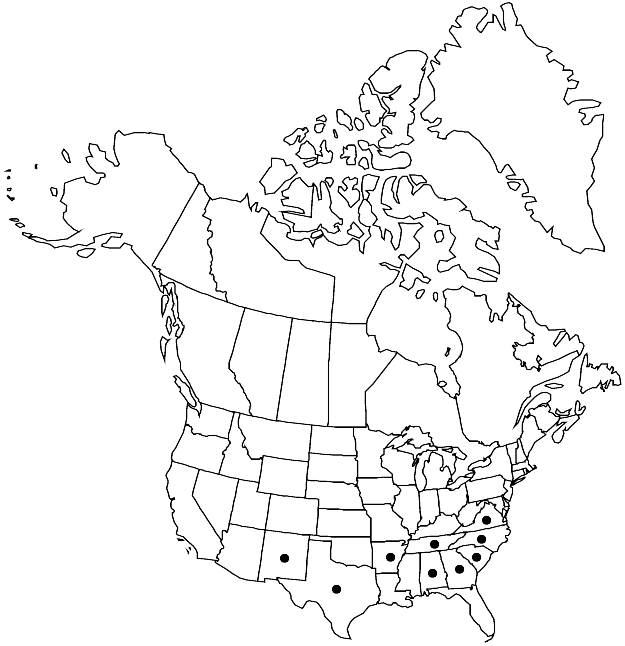Difference between revisions of "Entodon sullivantii"
Contr. Fl. Crypt. As., 233. 1873.
FNA>Volume Importer |
imported>Volume Importer |
||
| (2 intermediate revisions by 2 users not shown) | |||
| Line 50: | Line 50: | ||
|publication year=1873 | |publication year=1873 | ||
|special status= | |special status= | ||
| − | |source xml=https:// | + | |source xml=https://bitbucket.org/aafc-mbb/fna-data-curation/src/2e0870ddd59836b60bcf96646a41e87ea5a5943a/coarse_grained_fna_xml/V28/V28_789.xml |
|genus=Entodon | |genus=Entodon | ||
|species=Entodon sullivantii | |species=Entodon sullivantii | ||
Latest revision as of 21:38, 5 November 2020
Plants in thin mats, green to yellow-green. Stems to 6 cm, subpinnate, branches terete-foliate, sometimes appearing somewhat complanate-foliate. Leaves erect, oblong-ovate, 1.8–2 mm; margins plane, entire proximally, serrulate distally; apex acute to gradually short-acuminate; ecostate or costa double, short; alar region ± abruptly differentiated, 1-stratose, not reaching costa. Sexual condition autoicous. Seta reddish, 1.4–1.7 cm. Capsule cylindric, 2–2.7 mm; annulus 3-seriate, persistent; operculum obliquely rostrate; exostome teeth brown, external surface cross striolate proximally, papillose to smooth apically, not perforate; endostome segments smooth to lightly roughened. Spores 10–13(–19) µm.
Habitat: Rock in moist hardwood forests
Elevation: low to moderate elevations
Distribution

Ala., Ark., Ga., N.Mex., N.C., S.C., Tenn., Tex., Va., Mexico (Michoacán), e Asia.
Discussion
Entodon sullivantii is one of the rarest species of the genus, and one of the few that most commonly grows on rock. The species is characterized by essentially terete-foliate branches (sometimes not overly obvious), reddish setae, cross striolate exostome teeth, and smooth endostome segments. The capsule is usually somewhat wrinkled when dry and empty.
Selected References
None.